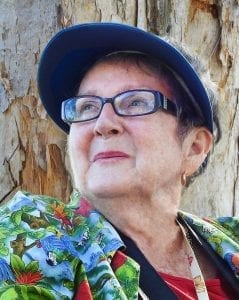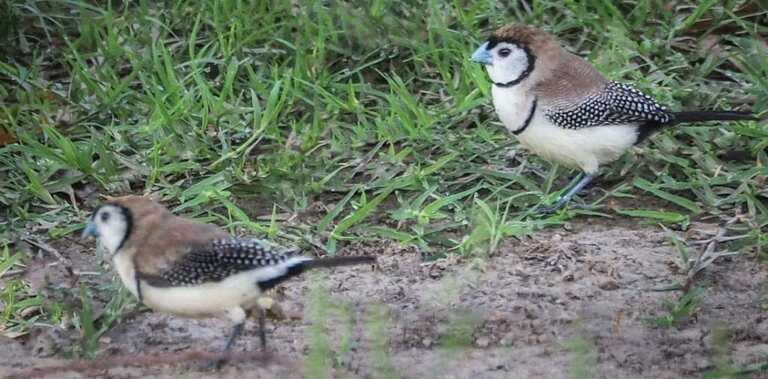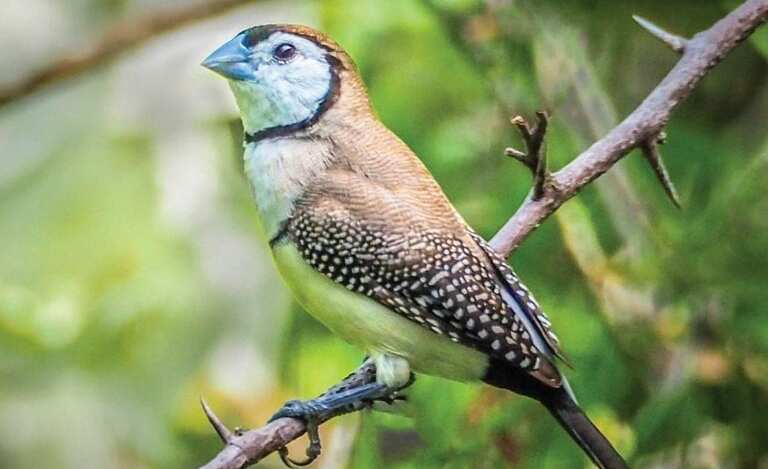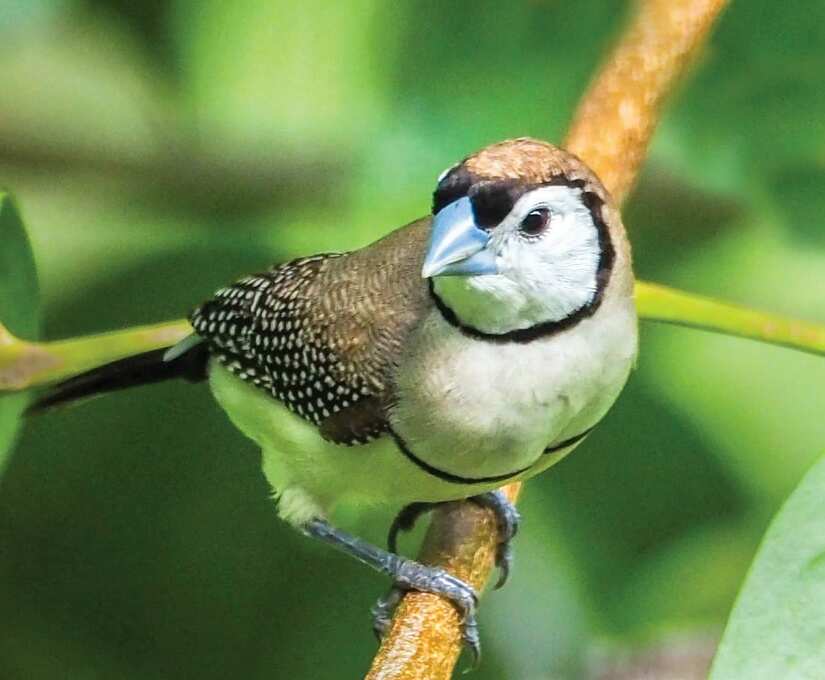Tags: Wildlife. Birds of Australia. Australian Wildlife
DOUBLE-BARRED FINCH – TAENIOPYGIA BICHENOVII
By Marj Webber

Double-barred Finches are tiny birds (10-11 cm) commonly seen on Bribie Island in grassy areas, low bushland, and heathlands.
They are easily identified from other finches by the two distinct black stripes across their white breast with the top bar encircling a white face. This feature is not unlike the face of the Barn Owl so they are sometimes referred to as “Owl Finches”. Male and female are very similar and very difficult to tell apart.
The male has a slightly narrower black stripe on its chest but this is very hard to pick on such a tiny and fast moving bird. They mostly feed on the ground on grass seeds and insects. Usually, there are several birds feeding together. Sometimes other finches join their group.

Foraging for grass seeds and insects.
Red-browed Finches often accompany the Double-bars when foraging for food. Because they are not very strong flyers they tend to stay fairly close to the water as they need to drink quite frequently. There are several places on Bribie where you can almost certainly see these tiny birds.
I often see them feeding by the roadside when riding along Treatment Works Road and Hornsby Road and many other places as well. Their nests are neatly rounded grass structures with a hole in the side for entry. Inside the nests are lined with feathers and plant material. Males gather the building materials and bring them to the females who are the nest builders. Usually, the nests are close to the ground and well protected by thick undergrowth and foliage.
Sometimes they build their nests close to a wasp nest so that if a predator disturbs the wasps the Double Bars have added protection by the angry wasps. Often several nests are built in close proximity either for protection or company or maybe both. In our area, the most likely time for breeding is between late June and November.

Double-Barred Finch.
Double-barred finches pair for life. Both parents incubate the 4-5 tiny white eggs for 12-14 days. The young are fed by both parents and are able to fly after about 21 days. After about 4-5 weeks they are able to fend for themselves and in 9 months the young are able to commence breeding. As with most birds, there is a courting ritual during the breeding season.
Males hop towards the females with ruffled feathers, swaying from side to side. Sometimes twigs or pieces of grass are held in their bills at the same time. Double-barred finches are found from the Kimberley in WA across the northern part of NT and Qld and right down the east coast to the Murray River in Victoria.
The birds in WA and NT are a little different to the coastal ones in that they have a black rump whereas along the east coast the rumps are predominately white. They have fared fairly well with urban development and have been able to adapt in many cases. A lot of their natural habitat has gone but their conservation status so far is still secure. Double-barred Finches are one of the most popular finches to be bred in captivity. A permit is required to be able to keep this native bird.
Other Articles
https://thebribieislander.com.au/australian-magpie-australian-wildlife/
https://thebribieislander.com.au/paperbark/
